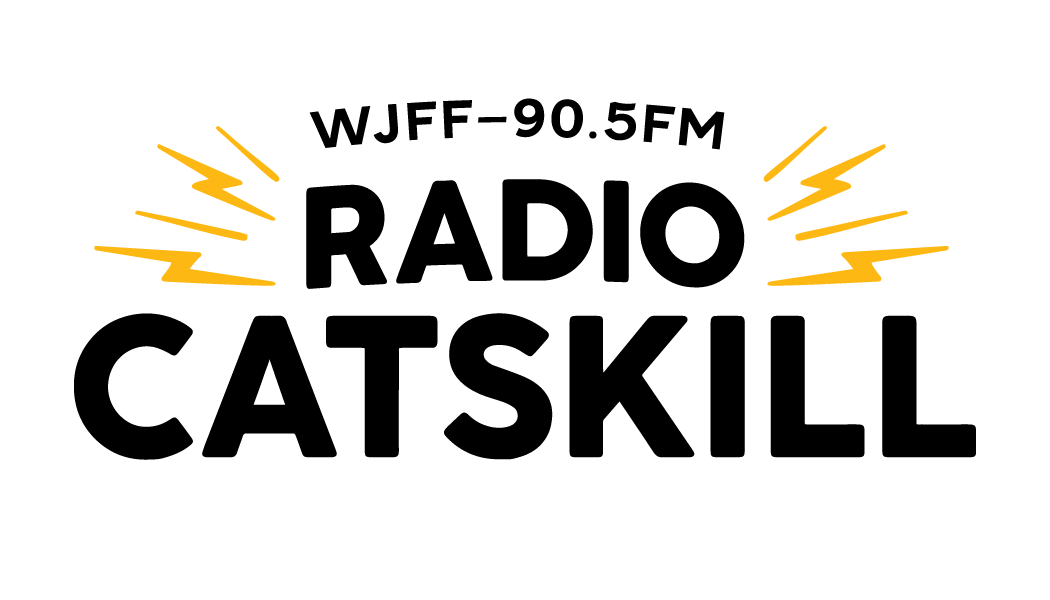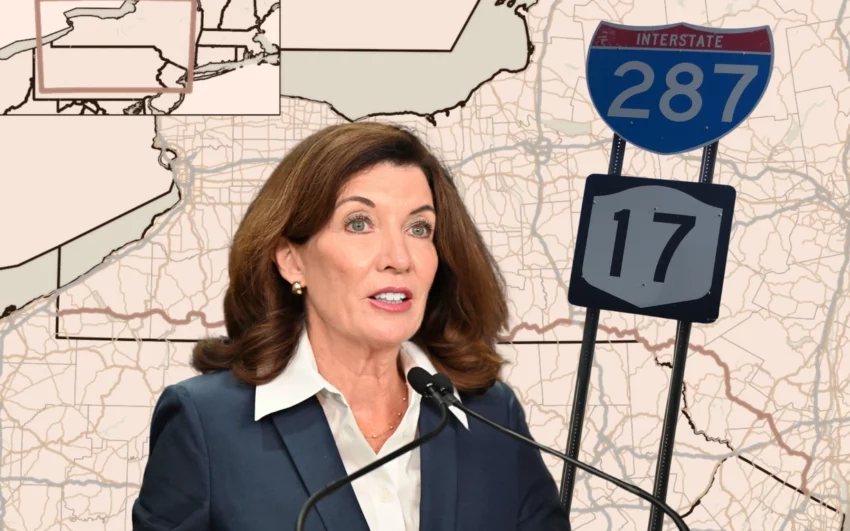This story originally appeared in New York Focus, a nonprofit news publication investigating power in New York. Sign up for their newsletter here.
NEW YORK STATE · September 24, 2024
A $1.3 Billion Project That Would Save Drivers Six Minutes Max
As the state’s plans to get New Yorkers out of their cars stall, Governor Hochul is championing a highway expansion in the Hudson Valley.
By Sam Mellins , New York Focus
A planned highway expansion in the Catskill region championed by Governor Kathy Hochul would save drivers one to six minutes at a cost of at least $1.3 billion, according to a new study from the state Department of Transportation, or DOT.
The project is slated for New York’s Route 17, which stretches about 30 miles from the Woodbury Common shopping center past Legoland New York and serves tens of thousands of drivers each day. The state is considering one proposal that would expand the existing two-lane highway at three locations and another that would add a lane in each direction along about half of the 30-mile stretch. The proposals would reduce crashes on the road, according to the study, which also found that it’s possible to achieve that safety benefit without widening the highway.
Hochul heralded the project last week as an opportunity to “reimagine this vital roadway into a modern highway.” This support is in line with her pattern of prioritizing highway projects: Hochul’s administration has steered billions in federal money to highways rather than mass transit and dramatically boosted the amount of state cash devoted to highways. The state’s five-year transportation plan, which focuses heavily on roads, increased spending by over $9 billion compared to the previous plan.
The $1.3 billion expansion comes after Hochul’s decision to pause New York City’s congestion pricing program ripped a multibillion dollar hole in the budget of the Metropolitan Transportation Authority, which runs the subways, buses, and trains that serve millions of city residents and hundreds of thousands of suburbanites daily. That program was slated to raise $1 billion a year for upgrades like new train cars and station elevators.
Local politicians have backed the highway proposal. “It decreases the length of time to get from one place to the other,” Assemblymember Aileen Gunther, who represents part of the project area, told New York Focus. “Even if it’s a little difference, it’s a difference of people sitting in traffic and polluting the air in our beautiful county.”
The labor union IUOE Local 825, which represents road construction workers and would likely receive significant contracts to perform work on the project, also supports the plan. Hochul visited an IUOE training facility in July and talked up the expansion.
“She’s done a lot of good putting our members to work and making their lives better and really prepping the Hudson Valley for the growth that’s just going to naturally come its way,” IUOE business manager Greg Lalevee told New York Focus in July.
DOT spokesperson Glenn Blain said that the project “is intended to address operational and safety deficiencies, improve congestion-related travel times, and address features of the corridor that currently do not meet interstate standards.”
DOT estimates that the project will be completed in 2030. New York is currently working with the federal government to prepare an environmental impact statement for the project, a necessary step before beginning construction.
Transportation planners and local environmentalists aren’t fans of the project. They say it isn’t in line with New York’s official climate plan, which calls for shifting away from car-centric planning to focus on public transportation and walkable communities. That goal has stalled since the climate law was enacted, with New Yorkers driving more now than they did before the pandemic.
Highway expansions like the Route 17 project are emblematic of that trend, said Rachel Weinberger, who directs transportation research at the nonprofit Regional Plan Association.
“We think we’re somehow going to build our way out of congestion and the climate crisis,” Weinberger said. “Doubling down on low density infrastructure only guarantees that in another 10 or 20 years from now, the congestion that they’re concerned about will catch up.”
The expansion would shave only a few minutes off travel times, according to DOT’s projections. That’s because there generally isn’t much congestion on the road, and average speeds during the busiest times of the week — weekday rush hours and the beginning and end of weekends — are still above 59 miles per hour. The speed limits on the relevant section of Route 17 are 55 and 65 miles per hour.
There are occasional patches of severe traffic, particularly on summer Fridays and Sundays, when masses of vacationers slow some sections of the road to about 20 miles per hour. But even that isolated congestion only adds 10 minutes of delay on Friday afternoons, DOT’s study found, boosting average travel time to 36 minutes, as opposed to 26 when the road is clear. The increase is similar on Sunday afternoons.
And the increased speeds may be short-lived. Expanding a highway leads to more drivers using it and more congestion, meaning that speed improvements are generally erased within a few years, researchers have found. There’s evidence that this occurs in rural areas, not just around cities, though the effect may be weaker.
Adding a third lane would drive down average travel times by one to four minutes at peak travel times, compared to a scenario without any expansion. By 2050, those time savings would rise to one to six minutes.
Hochul and DOT have also touted the expansion’s potential to reduce accidents. DOT found that adding a third lane would decrease the approximately 750 annual crashes on the stretch of highway by up to 25 percent. The study also found that the same reduction could be achieved by installing variable speed limit signs, which display speed limits specifically calibrated to road and traffic conditions.
The most effective way to prevent crashes — and a much cheaper one — would be lowering the 65 mile-per-hour speed limit, Weinberger noted.
“If safety is your primary concern, that’s a very easy way to address it,” she said.
Gunther, the assemblymember, said that rather than lowering speed limits, the state should ensure that drivers are “paying attention, not looking at their iPhone or half asleep.”
“It’s about each person having caution and doing the right thing,” she said.


You don’t live in this area and construction is going to be a nightmare. We will all have to travel the back roads to avoid it, creating more congestion. Please re-think this